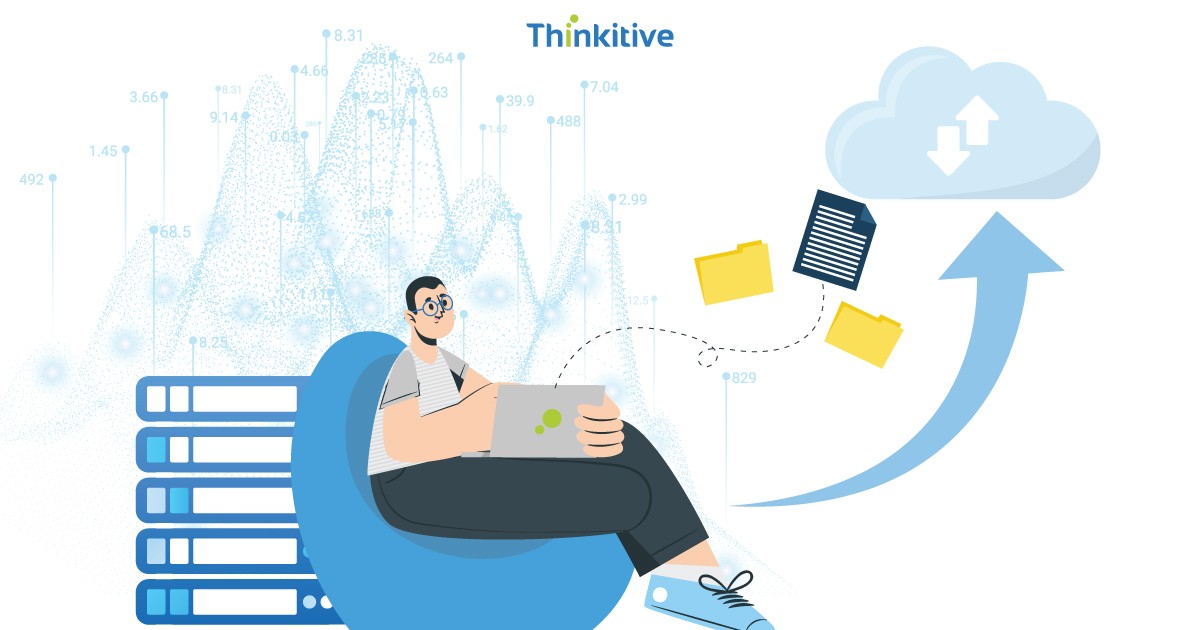The introduction of technology, especially electronic health records (EHR), has clearly elevated the overall experience of care provided to us. From driving evidence-based practices to our entire medical history on our phones, the healthcare industry has clearly come a long way.
However, as healthcare providers are moving towards a more particular approach with custom EHR systems, a problem that is not talked about is surfacing during the implementation process for healthcare providers. Yes, we’re talking about healthcare data migration. EHR data migration presents a new set of challenges that are quite different from the rest.
However, for your EHR system to run smoothly and without any interruptions or incomplete data, a smooth EHR system migration is necessary. There are certain data migration best practices that need to be followed with an EHR migration plan in place.
All these things for someone who is just starting to look for a custom EHR software development would be too much. But worry not! You’ve come to the right place!
In this blog, you’ll find some of the best practices for EHR data migration in healthcare, along with some effective data migration strategies for custom EHR implementation.
On that note, let this blog be a step-by-step guide for EHR data migration, and let’s get started!

Planning for Success: Laying the Groundwork for Your Data Migration
— Assess Your Current Data Landscape
The first step is to understand the current state of the data that exists in your system. Understand the data and sort it on the basis of data types. Also, know the formats in which the data is stored and what kind of storage systems are used for safeguarding it.
Once done, assess your data with effective tools that are used for data mapping and data quality assessment. Analyzing these reports can give you a clear idea about the way data is stored and generated in the system; it is important for you to know the amount of work that is needed to be done on the migration part for a smooth transition.
— Define Your Data Migration Goals
This is an important part of the Electronic Health Record migration plan as it helps ensure data integrity during the EHR transition. Set clear goals for migration, like what data needs to be migrated. Custom EHR implementation generates different types of data. However, for your practice to be more precise, unique, and data-oriented, you need to migrate the data that would be useful for it.
To achieve this, you need to understand the different data migration approaches, which are full migration and staged migration. Where the entire data is migrated as it is in one go, and on the other, it is planned and migrated step by step.
— Assemble Your Data Migration Team
Data migration is a crucial step in the transition from a generic EHR system to a custom EHR system. That is why having a team for data migration is essential. Also, there should be a data manager to assess the quality of data, as well as data analysts and IT specialists, for smooth migration. Depending on the size of the data, the team size can vary. Using the right skills and expertise, you can ensure a smooth data migration process where everything works in synchrony.
Streamlining the Process: Key Strategies for Data Migration
— Data Cleansing and Standardization
The next step in the data migration process is data cleansing, which can be loosely defined as enhancing the data and keeping it in a standardized format. It is used to address inconsistencies, duplication, and other sets of data that might not be useful or can present problems. Using some of the best practices for EHR data migration in healthcare, like data deduplication or data normalization, you can easily achieve this.
— Data Mapping and Transformation
The next step is data mapping and translating that data from the existing system to the new one. Data mapping can be defined as matching one set of data with another one. This is done to ensure that in the transformation process, both systems are able to find the data from one system to another easily. Some of the most common practices used in data transformation are data reformatting and code conversion. These techniques are not only effective but also ensure the integrity of the data being migrated.
— Data Security and Compliance
Your data migration checklist for a custom EHR implementation must include data security and compliance. There is a high chance of data leaks or damage during the migration process, and since this is one of the major challenges of EHR data migration for custom systems, adherence to the specific needs is crucially important.
Testing and Validation: Ensuring a Seamless Transition
— Thorough Data Testing
One of the most effective data migration strategies for custom EHR implementation is comprehensively testing the data. This is done to attain accuracy in data and to understand the completeness of the data. This is important for ensuring data integrity during the EHR transition to the new system. Also, there are different data testing methods like data integrity checks, user acceptance testing, etc. Using the one that suits you best and gives you more accurate results is the one you should go for.
— Data Validation and Reconciliation
Last but not least, data validation and reconciliation are the last steps in data migration in custom EHR implementation. Data validation, as the name suggests, basically checks the quality of data and the source from which it is obtained. Its role of verifying the accuracy of migrated data can define the future of your custom EHR system.
Conclusion
EHR data migration is crucial for EHR system transition. It can define and shape the future of your healthcare practice and plays a crucial role ensuring data integrity during EHR transition. Let this blog be your guide for EHR data migration or healthcare data migration and follow the data migration strategies mentioned below to enhance the quality of care with digital healthcare systems. And we hope that this blog somewhere answers the question, ‘how to migrate data to a new EHR system.’
Frequently Asked Questions
1. Why is data migration important in EHR implementation?
Data migration is crucial in EHR implementation because it ensures a smooth transition of patient medical history. This complete and accurate data is vital for continuous care, reducing errors, and maintaining compliance with regulations. It’s like moving to a new house – you won’t leave all your important belongings behind!
2. What are the biggest challenges of EHR data migration?
Migrating EHR data can be tricky. Some of the challenges in this may include:
- Ensuring compatibility between old and new systems.
- Keeping vast amounts of data accurate during transfer.
- Minimizing downtime that disrupts patient care.
Emphasizing the importance of proper planning and data cleaning is key to a smooth transition. It’s not just a technical step, but a strategic process that requires your expertise and attention to detail. Your role in this phase is crucial for a successful data migration.
3. What are the risks of poor data migration?
Poor data migration can lead to big trouble. You might lose important info, have crashed due to wonky data formats, or expose sensitive details. Even if everything seems to transfer, inconsistencies can slow you down or cause compliance headaches. In short, cutting corners on data migration can cost you time, money, and trust.
4. How long does EHR data migration typically take?
EHR data migration can vary greatly depending on data size, system complexity, and planning. It can range from weeks for small practices to several months for large hospitals. Careful planning, clean data, and professional help can streamline the process.
5. What steps can I take to ensure a smooth data migration?
Here are key steps for a smooth data migration:
- Plan meticulously: Define goals, data to move, and a timeline.
- Assemble your team: Include IT, data analysts, and stakeholders.
- Cleanse your data: Ensure accuracy and avoid transferring errors.
- Backup religiously: Have a safety net in case of unexpected issues.
- Test thoroughly: Verify everything works seamlessly in the new system.
- Communicate clearly: Keep all stakeholders informed throughout the process.
6. How can I ensure the security of my patient data during migration?
Here are some key steps to ensure patient data security during migration:
- Encrypt everything: Encrypt patient data both at rest and in transit using strong protocols.
- Limit access: Implement strict access controls so only authorized personnel can view specific data.
- Use secure methods: Transfer data using secure protocols and verified methods.
- Monitor and audit: Regularly monitor the migration process for irregularities and conduct audits to ensure compliance.
- Train staff: Train staff on security best practices to prevent breaches.
7. Should I involve my staff in the data migration process?
Yes, involve your staff in the data migration. Their knowledge of the data and its quirks is invaluable. Train them on the new system and let them identify potential issues. This builds buy-in and ensures a smoother transition.
8. What is the best strategy for data migration: big bang or incremental?
The best migration strategy depends on your risk tolerance. Big bang (all at once) is faster and cheaper but riskier if something goes wrong. Incremental (phased approach) minimizes risk but takes longer and requires managing two systems. Consider complexity, resources, and downtime needs when choosing.
9. How can we ensure data quality during migration?
Ensuring data quality during migration requires planning. Start by defining what “quality” means for your data. Then, clean and validate your data before migration to remove errors and inconsistencies. Test the migration with a small set of data first. Finally, validate the migrated data to ensure everything is transferred correctly.
10. What support is needed post-migration?
Post-migration support ensures a smooth transition to your new system. It includes checking for data accuracy, resolving user issues, and optimizing performance. Basically, it’s like mopping up after a move to make sure everything is in its place and working right.
⸻ Author Bio ⸻

Akash Hekare — Lead Software Engineer at Thinkitive Technologies












